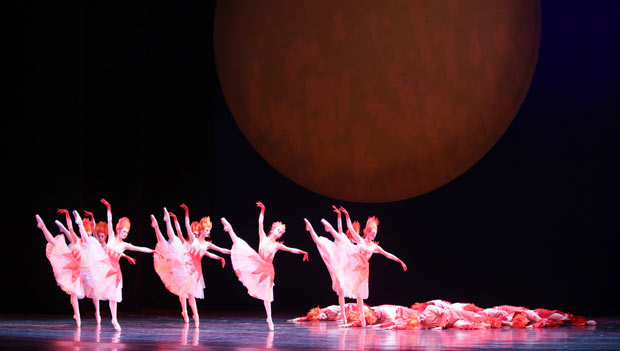
© Natasha Razina. (Click image for larger version)
Mariinsky Ballet
The Little Humpbacked Horse
★★★★✰
Washington, Kennedy Center Opera House
31 January 2017
www.mariinsky.ru
www.kennedy-center.org
Alexei Ratmansky’s The Little Humpbacked Horse is a brilliant dance-comedy which percolates with irresistible energy and side-splitting humor from a cast of quirky characters, all supported by imaginative designs and arresting choreography. The ballet is based on a popular Russian fairytale of the same title and was created by Ratmansky for the company in 2009. The famed St. Petersburg troupe brought this gem to Washington D.C. for the company’s annual appearance at the Kennedy Center Opera House. This was the Mariinsky Ballet like never before. Who knew the Mariinsky dancers are a group of profoundly entertaining comedians?
“The Little Humpbacked Horse” was written in verse by Pyotr Yershov in 1834. Legend has it that Alexander Pushkin not only helped Yershov by editing the poem, but also wrote the first four lines of its final version. It tells a story about a peasant’s son, Ivan (or Ivanushka), who is deemed a fool by his family. In truth, Ivan is a bright and resourceful young man, who, with the help of his magic pony (the horse of the title), outsmarts a dimwitted Tsar and marries a beautiful Tsarevna.
The first balletic version of the fairytale was created in 1864 by Arthur Saint-Léon to a score by Cesare Pogni and was premiered by the Imperial Ballet in St. Petersburg. The esteemed Marius Petipa revived the ballet in 1895, with revisions of the music by Riccardo Drigo. That production premiered under the new name, The Tsar Maiden, with Pierina Legnani dancing the title role. Most notable subsequent revivals were done by Alexander Gorsky, in 1901 and 1912, for the Bolshoi Ballet and the Mariinsky Ballet, respectively.
In the Soviet era, the ballet was created anew by Alexander Radunsky in 1960 for the Bolshoi, featuring a new score by a young composer, Rodion Shchedrin. This was the music that Ratmansky used for his 2009 production of the ballet.

© Natasha Razina. (Click image for larger version)
A prodigious storyteller, Ratmansky populates the ballet with a multitude of fantastic creatures (firebirds, sea people and magic horses) and draws each personage (Ivan the Fool, the Tsar Maiden, the Tsar, the Gentleman in the Bed Chamber, and the Little Humpbacked Horse among the others) with masterful skill, so this circus-like spectacle takes on a human dimension. Even if you are not familiar with the original poem, Ratmansky’s choreography is so rich, clear, imaginative, and engaging that it’s quite easy to follow the action’s numerous twists and turns. And the expressive – and downright hilarious – pantomime is everything here, making this Little Horse a truly theatrical ballet.
Maxim Isaev created thoroughly modern designs and costumes for this production. The set décor is minimal and simple. The house in which Ivan, his father and his two elder brothers, Danilo and Gavrilo, live is represented by two rectangles in red and black. A huge yellow circle dominates the stage when at night Ivan guards his family field of wheat in order to capture a villain who destroys the crops. (This is the scene in which he catches the Young Mare, who, in return for her freedom, gives Ivan two mighty stallions and one unassuming humpbacked horse). The town’s marketplace is demarcated by a giant red square suspended from above. The tsar’s throne is a simple L-shaped chair; and his royal bed is a wooden block in psychedelic green.
The costume design, however, is a totally different story. A feat of imagination and whimsy, the outfits for the cast look wildly ornate and often outlandish. For his crown, the Tsar wears a small replica of the Kremlin’s dome; and the enchanting Tsarevna looks like a Disney princess in her beautifully-decorated silvery gown. The sea people wear unisex blue gauzy skirts and matching tops, with painted reflections of their faces; the firebirds dazzle in their smart red-and-white attire; and, clad in green, the townsfolk evoke birch trees.
In this ballet, the Mariinsky dancers, famous for their refined classical style and formal manners, revealed their affable spontaneity and playful charm as well as their penchant for comedy.

© Natasha Razina. (Click image for larger version)
On opening night, Vladimir Shklyarov was the epitome of boyish naiveté and curiosity in the role of Ivan, portraying his hero as an easygoing and unpretentious young man who never takes himself too seriously but who, nevertheless, is eager to prove himself. Ivan’s friendship with his newly-found companion, the Little Humpbacked Horse (performed here with perfect comic timing and loads of energy by Yaroslav Baibordin), felt genuine and touching; and his budding romance with Anastasia Matvienko’s Tsarevna was a delight to behold. Shklyarov’s dancing, full of complex jumps and speedy turns, was always lively and clean; and he proved a natural comedian. His comic skills were particularly impressive in the scenes when his character had to deal with a scheming Chamberlain (the wonderfully animated Yuri Smekalov), who wanted Ivan’s demise and would send him on one impossible task after another, including a trip to the bottom of the sea and a jump into a cauldron with boiling water.
Matvienko played the role of a tomboyish Tsarevna with a winning combination of sweetness and poise. Her heroine dogged the amorous advances of the old lovelorn Tsar (Dmitry Pykhachov) with equal amusement and determination; and her attraction to Shklyarov’s Ivan felt utterly sincere. Ratmansky gave the two young lovers some of the most enchanting choreography in the entire ballet and both Shklyarov and Matvienko infused their solos and duets with distinctive personality and an air of youthful ardor.
The lilting and bright score by Rodion Shchedrin, full of folksy tunes and boisterous dynamics, perfectly underpinned the development of the whole story and was performed with an appealing, vigorous flair by the Opera House orchestra, led by Alexei Repnikov.







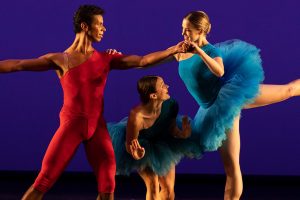
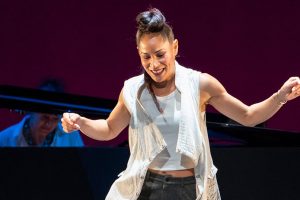
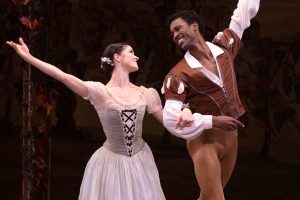

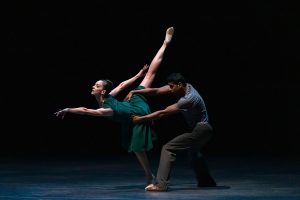
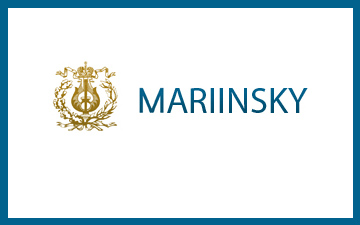
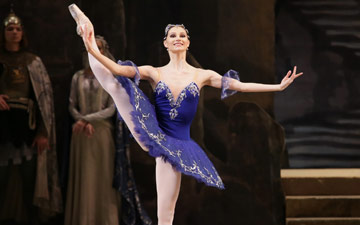
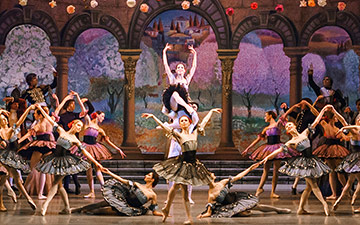
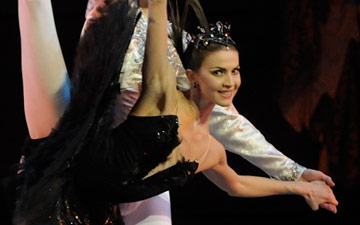
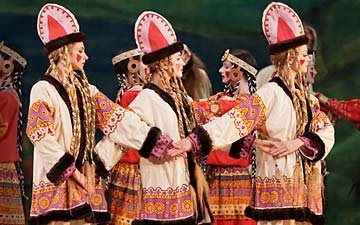
You must be logged in to post a comment.